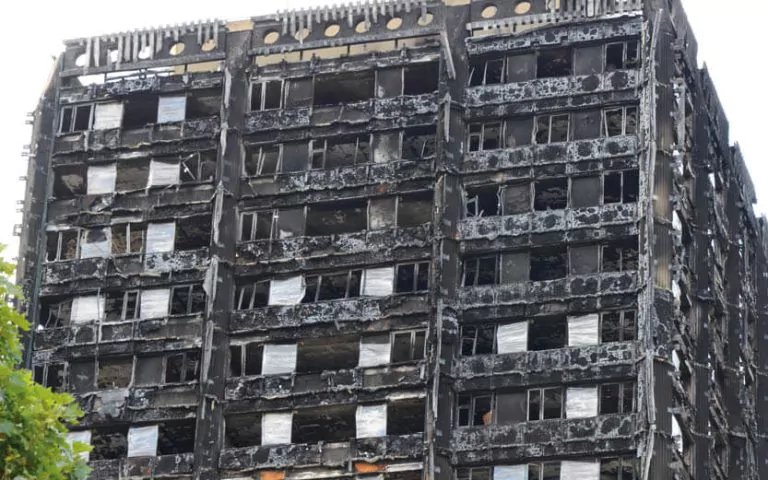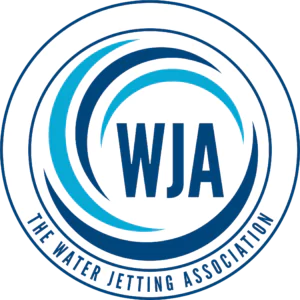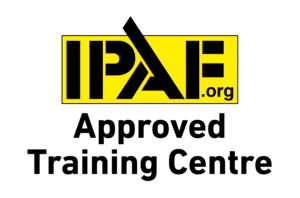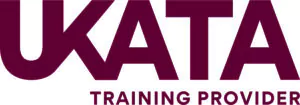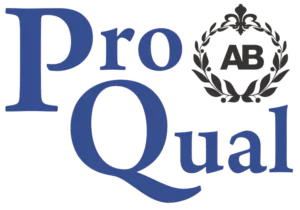A Guide to Building Safety Act Awareness
The Building Safety Act has become a widely discussed topic in industry news, as it introduces significant changes aimed at improving safety standards in the built environment.
However, understanding the complexities of the Act can be challenging. This blog explores how we can leverage modern technology to better understand the regulations of the Building Safety Act.

What Does BSA Stand For and When Did It Come Into Effect?
BSA stands for the Building Safety Act, a topic that has gained a lot of attention in the construction industry following its recent introduction in 2022. The act was introduced by the UK Government in response to the tragic Grenfell Tower Fire, which served as a major wake-up call for the sector, resulting in the devastating loss of 72 lives.
The Building Safety Act targets high-rise buildings (seven stories or 18 meters tall) and aims to prevent the same mistakes by addressing issues that led to the disaster.
What Is Building Safety Act Awareness?
Building Safety Act Awareness relates to the Building Safety Act regulations that were introduced in 2022. These regulations aim to improve building safety, particularly for high-rise and high-risk buildings.
Understanding these regulations is essential for professionals in the construction industry, as significant changes have been made since their introduction. Raising awareness of these regulations helps industry professionals adapt to the new requirements, ensuring safer building practices and legal compliance.
You can increase awareness of the Building Safety Act by keeping up with industry news from reliable sources such as the HSE (Health and Safety Executive) or by taking Building Safety Act courses to come to terms with the ins and outs of these regulations.
If you opt to complete a training course, choose a reputable provider that offers up-to-date information on the Building Safety Act.
Key Aspects of the Building Safety Act Regulations
There are several important considerations you should be aware of regarding the Building Safety Act Regulations. Let’s discuss this in more detail.
High Rise Buildings
The Building Safety Act is particularly important for high-rise buildings. This is because buildings like this are more vulnerable to risks due to their height and complexity.
High-rise buildings are classified as buildings that exceed 7+ storeys or are 18 meters (59 feet) or higher. High-risk buildings require strategic planning to ensure fire safety, structural integrity, and effective evacuation procedures.
Accountability
Duty holders are appointed across the scope of a project to ensure responsibility for maintaining safety and compliance. Each duty holder has specific legal obligations to ensure that safety standards are met at every stage from the design to occupancy of the building.
Duty holders must understand their role and responsibilities, ensuring they are equipped to make informed decisions that prioritise the safety and well-being of building occupants.
Fire Safety
Many individuals assume these regulations focus solely on structural safety risks, but one of the main things to consider is Fire Safety.
Fire Safety includes things such as materials used in the structure of the building, making sure they’re not highly flammable and ensuring there is adequate fire evacuation plans.
It is a huge aspect of ensuring a building’s safety and was the main cause of the Grenfell Tower Fire due to the use of highly flammable cladding materials.
Safety Case Report
A central requirement of the Building Safety Act for high-risk buildings is the creation of a building safety case. This is an assessment that demonstrates how building safety risks are being identified, managed, and reduced to as low as reasonably practicable (ALARP).
This will include information about the building’s design, construction, fire safety measures, structural integrity, maintenance procedures, and emergency plans. Once the Building Safety Regulator approves this, they will issue a Building Assessment Certificate to show the building is safe.
Building Safety Regulator (BSR)
The Building Safety Regulator is a new regulator under the Health and Safety Executive (HSE) that has the responsibility of overseeing the safety and performance of all buildings.
Building Safety Regulators will perform inspections, offer guidance and take enforcement action. They also play a role in reviewing safety case reports.
Gateways
Gateways act as ‘checkpoints’ throughout the construction of the building. This is a review of safety at every critical stage of a high-rise or high-risk building’s development.
There are three main Gateways, each has a purpose of ensuring safety measures are in place before the project can progress to the next phase.
The Golden Thread
The Golden Thread is a string of information of all the key details to understand, manage, and maintain the safety of a building effectively. This information must be a digital record, easily accessible and uncorruptible.
Penalties
Failing to comply with the requirements of the Building Safety Act can result in serious legal and financial consequences. The Act gives the Building Safety Regulator (BSR) strong enforcement powers to hold individuals and organisations accountable if they breach their duties or fail to meet safety standards.
Penalties for misconduct can include fines, criminal charges, stop notices and restrictions on occupation.
Why is Building Safety Act Training Important?
The Building Safety Act is essential for professionals in the built environment. Training on these regulations is mandatory to ensure compliance and safety. Here are a few key reasons why this training is important:
1. Reassurance for workers
It is worrying to know that the construction industry holds one of the highest numbers of work-related fatalities. Construction work is high-risk and people’s lives are in the hands of those responsible for building safety.
Completing the Building Safety Act training helps workers feel more confident in the safety protocols they follow, knowing they have the latest knowledge and best practices to mitigate risks. This not only helps to protect workers but also ensures that buildings meet the highest safety standards.
2. Safety for residents
Following on from the last point, when buildings meet the highest safety standard there is less likelihood of safety hazards affecting residents. Ultimately providing residents with a safer living environment and reducing the risk of fire, structural failures, or other hazards.
By prioritising safety, these measures actively enhance the overall well-being of the residents and give them peace of mind, knowing a resilient and secure structure protects them.
3. Promotes Accountability
During the Grenfell Tower Fire tragedy, there were multiple failures across the project. The Building Safety Act now holds individuals accountable for completing their responsibilities. The act outlines clear roles and responsibilities from the design stage right through to the occupation and management of the building.
4. Legal compliance
The Building Safety Act is a legal requirement for those involved in building work, ensuring that all projects meet the necessary safety standards and regulations.
A lack of legal compliance can lead to severe penalties, including fines, project delays, legal action, and even criminal charges. It can also result in unsafe buildings, putting lives at risk and damaging reputations within the industry.
5. Reputation
Finally, completing Building Safety Act training boosts your credibility. It demonstrates a commitment to safety in the built environment, leading to more attractive career opportunities. Alongside this, businesses that have a team equipped to comply with the BSA will gain more client trust, resulting in more clients and more work.
This also swings the other way; non-compliance for businesses could result in damage to their reputation and difficulty selling or leasing the building(s). For individuals, damage to their reputation could make them lose work and make it difficult to get hired.
6. Improved Risk Management
Investing in training provides essential knowledge on how to effectively manage risks. It helps you identify potential hazards on-site and understand the safety regulations and best practices needed to prevent accidents.
This heightened awareness allows you to take proactive steps to ensure compliance, protect workers, and foster a safer working environment. The Building Safety Act requires you to recognise, assess, and manage a variety of hazards, and it ensures that you follow safety protocols throughout the building’s lifecycle.
You can encounter common hazards on-site, including fire risks, material failures, and poor design practices, all of which the right training and safety measures can mitigate these risks.
7. Future-Proofing Against Regulatory Changes
Building regulations evolve as new risks emerge and technology advances. Training ensures that professionals stay up to date with the latest legislative updates and best practices, keeping them compliant with future amendments to the Building Safety Act and related regulations.
This helps businesses and individuals remain competitive in an industry where compliance is critical.
Ultimately, being able to understand the Building Safety Act and the risks of non-compliance is incredibly important, and training allows you to navigate regulations with confidence.
With the Building Safety Act introducing significant changes to improve safety in the built environment, we introduced our one-day Understanding the Building Safety Act course in 2024. To further ease the transition, we are adding a Building Safety Act Awareness eLearning to our offering.
Is the BSA Awareness Course Offered As An eLearning?
Yes, here at 3B Training, we offer the Building Safety Act Awareness as an eLearning course through our Docebo eLearning platform. This flexible, online course allows you to learn at your own pace, ensuring you can fit training into your schedule without the need for in-person attendance.
The benefit of taking this course as eLearning is that it provides an interactive, video-based format covering the Building Safety Act. It includes modules, quizzes, and flexible completion options to suit your schedule.
This is an advantage because it is engaging and promotes better retention of the course content.
Building Safety Act Awareness eLearning Benefits
Taking Building Safety Act training, regardless of the delivery method, radiates a number of benefits, some of these include:
- Enhanced knowledge of safety regulations
- Improved compliance
- Risk mitigation
- Increased safety for occupants
- Cost savings
- Enhanced professional reputation
- Better communication and coordination
- Preparedness for emergencies
- Increased confidence in safety practices
- Contribution to a safer community
Anyone who completes this course benefits not only themselves but also the businesses they work for and the residents of the buildings they help safeguard. Find out more about these Top 10 Benefits of the Building Safety Act Training.
Offering this course as eLearning provides unique benefits, in addition to those already mentioned! Employers purchasing this eLearning for their employees can be assured that everyone completing this eLearning has a uniform and consistent standard of training and information.
It also offers the delegate a flexible learning option, perfect for those who have busy schedules or varying commitments, as they can take this eLearning at their convenience and from anywhere they like. Alongside all of these brilliant benefits, this eLearning also allows us to deliver engaging and interactive content. These come in the form of quizzes and videos that reinforce key information.
Who Should Take the BSA Awareness eLearning Course?
The Building Safety Act applies to various professionals across the construction and building industries. Some of these include:
Consultancy practices – Expert guidance on Building Safety Act compliance, helping businesses navigate regulations, conduct safety assessments, and implement best practices
Contractors – Make sure construction projects adhere to safety regulations, following the Building Safety Act’s requirements from planning to completion.
Developers – Have the duty to oversee projects and ensure that buildings meet the necessary safety standards, preventing risks and liabilities related to non-compliance.
Designers – Must integrate safety considerations into building plans, ensuring that designs align with the Building Safety Act’s regulations to create safer structures from the outset.
Among others who work in construction or in building environments. Construction work can be very demanding, it can be difficult to keep your knowledge up-to-date. This Building Safety Act Awareness eLearning offers flexible learning to busy professionals.
What Does This eLearning Cover?
The Building Safety Act Awareness eLearning course includes information on the Grenfell Tower Fire and the “Building a Safer Future” report by Dame Judith Hackitt. This course covers the following aspects:
Building Safety Act Overview
The first part of this eLearning is a Building Safety Act Overview. This section gives an introduction to the course and provides foundational knowledge of the Act’s significance and its key elements.
This section helps delegates understand the basics of building safety and the specific changes brought about by the legislation.
Lesson 1 – Legislation
In this lesson, you will be introduced to the Building Safety Act and its core legislative framework. They will gain an understanding of the key elements of the Act, its objectives, and its impact on building safety.
The lesson will provide insight into the recent laws and regulations that have been put in place to guide building safety standards.
Lesson 2 – Competence
This lesson teaches you how to remain competent while carrying out your role. It covers the importance of continuous learning, maintaining relevant certifications, and keeping up-to-date with the latest safety regulations and standards.
Lesson 3 – Roles and Responsibilities
The lesson will also cover the obligations of various stakeholders, including building owners, designers, and regulators, in ensuring compliance with the Act.
Since the Building Safety Act has become stricter about accountability during design, construction, and occupancy, duty holders must be aware of their roles and responsibilities so they don’t risk non-compliance or safety issues.
Lesson 4 – Gateways
Gateways are checkpoints throughout construction that ensure building projects meet safety and compliance standards at key stages.
In this lesson, delegates will explore the different gateway points in the construction process and learn about the requirements that need to be met at each checkpoint to maintain safety and quality.
Lesson 5 – The Golden Thread
The golden thread is a concept that refers to the continuous and traceable flow of information about a building’s design, construction, and ongoing maintenance.
In this lesson, delegates will understand the importance of maintaining a clear and accessible record of all building-related data throughout its lifecycle. They will learn how this information promotes safety, facilitates effective risk management, and ensures compliance with regulations.
Since duty holders need to be aware of storing ‘golden’ data, this eLearning covers how to maintain records, what needs to be noted, and the best practices for ensuring this information is accurate, up-to-date, and easily accessible.
This eLearning takes approximately 1 hour 15 minutes to complete and can be completed in one sitting or in various.

Do You Get a Certificate After Completing This eLearning?
Yes, once you have completed all the eLearning lessons and successfully passed the final assessment, you will gain a certificate accredited by 3B Training. The Building Safety Act eLearning certificate is valid for 12 months.
When your Building Safety Act Awareness certificate expires, you and/or the booker will be notified four weeks before your certificate is due to expire. To renew your certificate, you need to enroll on another Building Safety Act Awareness course.
This certification serves as evidence that the certificate holder is dedicated to health and safety in the built environment.
How Much Does This eLearning Cost?
You can purchase this eLearning at the price of just 25 + VAT per licence or if you are looking to purchase over 25 licences for a group of your employees, this eLearning is a part of our tiered pricing structure.
Our tiered pricing structure makes this eLearning even more affordable for those who need to buy licences in bulk.
How Can the Building Safety Act eLearning Benefit Businesses?
The Building Safety Act eLearning helps businesses by ensuring their teams are well-informed about the latest building safety regulations and compliance requirements. It promotes a culture of safety and accountability, reducing the risk of legal issues and safety breaches.
Your employees having this training ensures that they are efficient and have the knowledge needed to carry out their role. This reflects positively on businesses and improves their reputation as it shows their team has the necessary skills.
Businesses that have competent workers gain respect within the industry, as they demonstrate a commitment to upholding high standards of safety and quality. This can lead to improved reputation, stronger client trust, and an increased competitive edge.
eLearning is a great option to upskill employees because it offers flexibility and convenience, allowing staff to complete training at their own pace and schedule. This eliminates any additional costs you would otherwise incur from travel or time away from work.
It also provides the same level of training amongst employees, as everyone will receive a consistent level of content. eLearning has the benefit for employers of being able to track progress made in the eLearning, so they know where the employee is up to with it.
Overview
Overall, it’s important to be aware of the Building Safety Act if you work in the built environment. The Building Safety Act is a necessary step toward improving accountability, transparency, and safety in the construction and housing sectors.
The Act marks a significant shift in the management of building safety across the UK, particularly for high-rise and high-risk structures. Building Safety Act courses, being available as eLearning, is highly beneficial. The reason for this is that many individuals now need to upskill due to the recent implementation of changes.
It makes information about the Building Safety Act easily accessible, enabling professionals to stay informed, compliant, and confident in applying the new standards in their roles.




